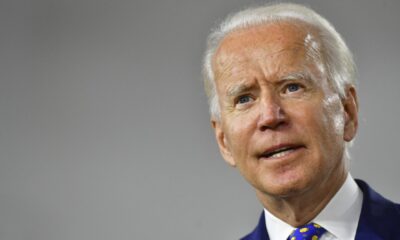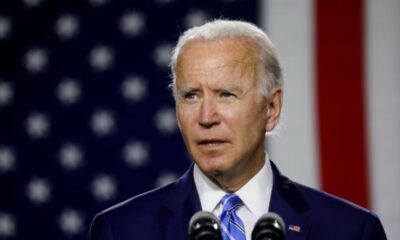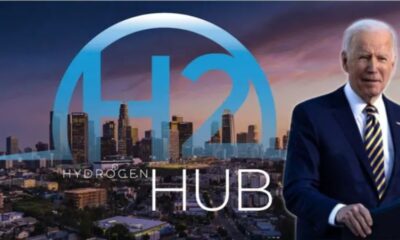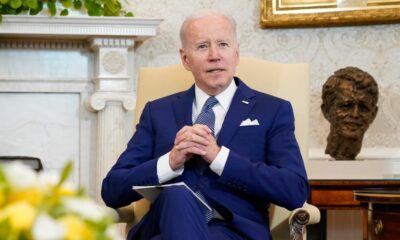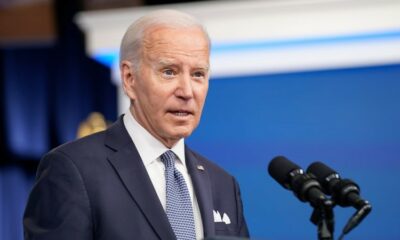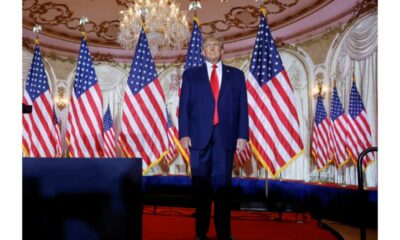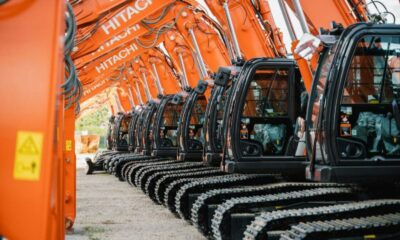World
Australia will buy five nuclear submarines from the United States to fill the capability gap
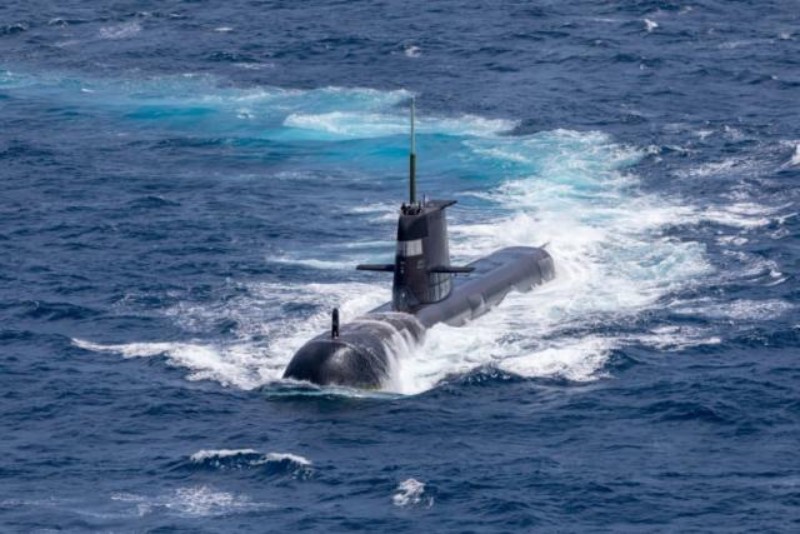
According to four US officials, as part of a significant Pacific security pact (AUKUS pact) with the United States and the United Kingdom, Australia is anticipated to reveal that it will buy up to five nuclear-powered submarines of the Virginia class from the United States in the 2030s. This defies repeated warnings that the United States’ shipyards were stretched to full capacity and could not sell any boats to Australia.
According to one of the officials, a new class of submarines will be constructed using UK designs and US technology by the late 2030s under the so-called AUKUS agreement, which will see at least one US submarine visit Australian ports.
On Monday, Australian Prime Minister Anthony Albanese will discuss AUKUS’s next steps with US President Joe Biden and UK Prime Minister Rishi Sunak in San Diego.
In a significant victory for his British counterpart Rishi Sunak, Prime Minister Anthony Albanese will soon announce that Australia will acquire a fleet of nuclear-powered submarines based primarily on a new British design.
On Tuesday, Albanese, Sunak, and US President Joe Biden will make an appearance at the San Diego Naval Base to discuss the project’s specifics.
According to Albanese, nuclear-powered submarines will “be the single biggest leap in our defence capability” in Australia’s history. They can travel underwater for longer distances than conventional vessels.
The longer-term AUKUS submarines would be a modified version of the UK’s next-generation Astute-class submarine, which is currently being designed.
In keeping with Defence Minister Richard Marles’ promise that the AUKUS submarine project will be truly a three-nation endeavor, the vessels would be assembled in Adelaide and incorporate American technology.
However, because it is more complicated than buying existing technology, the decision to proceed with a new design will raise concerns about delays and excessive costs.
The collaboration on hypersonic missiles, artificial intelligence, and cyber warfare is expected to be part of the Pacific security pact, which was first announced in September 2021. Beijing has condemned is seen as an attempt to counter China’s growing power and assertive position in the region.
On the condition of anonymity, two officials stated that the United States would deploy some submarines in Western Australia by about 2027 following the annual port visits.
Australia would acquire three submarines of the Virginia class by the beginning of the 2030s, with the option to buy two more. Atomic submarines can remain submerged for longer than regular ones and are more earnestly to recognize.
Meanwhile, Sunak was “buzzing about it” when he told ministers that the UK had “succeeded in its bid to sell British-designed nuclear submarines to Australia.”
It suggested that the US Virginia-class submarines would serve as a “stop-gap” while Australia and the UK collaborated on a design for a new Astute-class submarine, noting that the complexity of the task meant it might not be ready until the 2040s. Additionally, the acquisition of British submarines by Australia.
A Sunak spokesman said in London that the British government will also publish an update to its so-called “Integrated Review” of security, defense, and foreign policy on Monday.
Six Collins-class conventionally powered submarines currently in operation in Australia will continue to serve the country until 2036.
Several of Australia’s regional allies, including Indonesia and Malaysia, have expressed concern that the AUKUS announcement could fuel a nuclear arms race in the Indo-Pacific. Australia’s defense minister attempted to reassure them on Thursday.
Defense Minister Richard Marles told parliament, “Clearly, these submarines will have the capability to operate at war, but the true intent of this capability is to provide for the stability and for the peace of our region.”
The United States and the United Kingdom agreed to provide Australia with the technology and capability to deploy nuclear-powered submarines as part of the initial AUKUS deal.
Australia will be able to bridge a capability gap between the arrival of the new nuclear-powered AUKUS boats and the retirement of the current diesel-powered Collins-class submarines by buying vessels of the Virginia class.
According to multiple US defense sources, Australia will buy three submarines of the Virginia class by the beginning of the 2030s and will have the option to purchase two more.
The result justifies the hopeful methodology of US senator Joe Courtney, who said last year that Australia shouldn’t surrender any expectation of buying nuclear-powered submarines off-the-shelf from the US as an interim solution.
In order to begin disseminating information regarding the project, a delegation from South Australia is anticipated to pay a visit to the BAE Systems shipyard in the British port city of Barrow-in-Furness in the coming weeks.
While Australia waits for its own submarines, it is anticipated that American nuclear-powered submarines will frequently dock at the HMAS Stirling Naval Base in Perth.
The 18-month negotiations, which will help secure the Barrow-in-Furness shipyard’s future, are said to have pleased Sunak.
Australia was expected to select a submarine designed by the United States, with Britain playing a supporting role.
On Thursday, the top envoy of the United Kingdom in Australia called out Opposition Leader Peter Dutton for saying that Australia shouldn’t get nuclear-powered submarines from Britain under the AUKUS pact. The opposition leader was personally told that Dutton’s comments weren’t helpful.
Last week, Dutton, who was defense minister when AUKUS was declared in September 2021, cautioned against acquiring a future fleet from the UK by stating that he believed the American Virginia-class submarines were the best option for Australia.
Dutton stated, “The beauty in my mind with the American model, of the Virginia class, was that it was a proven design, it gave us interoperability with the Americans, and there will be more American subs in the Indo-Pacific than there will be British submarines.”
Vicki Treadell, the UK High Commissioner, was questioned about Dutton’s remarks during an appearance at the National Press Club. She stated, “I told Mr. Dutton myself last night that I didn’t agree with his view.”.
It will be the first time nuclear submarine technologies developed in the United States have been exported since the 1960s when the United States assisted Britain in designing its undersea fleet. If Australia’s submarines do indeed originate from the United States.
-

 Sports4 weeks ago
Sports4 weeks agoFIFA Club World Cup 2025: Complete List of Qualified Teams and Groups
-

 Sports3 weeks ago
Sports3 weeks agoAl Ahly vs Inter Miami, 2025 FIFA Club World Cup – Preview, Prediction, Predicted Lineups and How to Watch
-
Health1 week ago
Back to Roots: Ayurveda Offers Natural Cure for Common Hair Woes
-

 Tech2 weeks ago
Tech2 weeks agoFrom Soil to Silicon: The Rise of Agriculture AI and Drone Innovations in 2025
-

 Sports3 weeks ago
Sports3 weeks agoFIVB Men’s Volleyball Nations League 2025: Full Schedule, Fixtures, Format, Teams, Pools and How to Watch
-

 Science4 weeks ago
Science4 weeks agoEverything You Need to Know about Skywatching in June 2025: Full Moon, New Moon, Arietid Meteors, and Planetary Marvels
-

 Startup3 weeks ago
Startup3 weeks agoHow Instagram Is Driving Global Social Media Marketing Trends
-

 Television4 weeks ago
Television4 weeks agoTribeca Festival 2025: Date, Time, Lineups, Performances, Tickets and How to Watch

